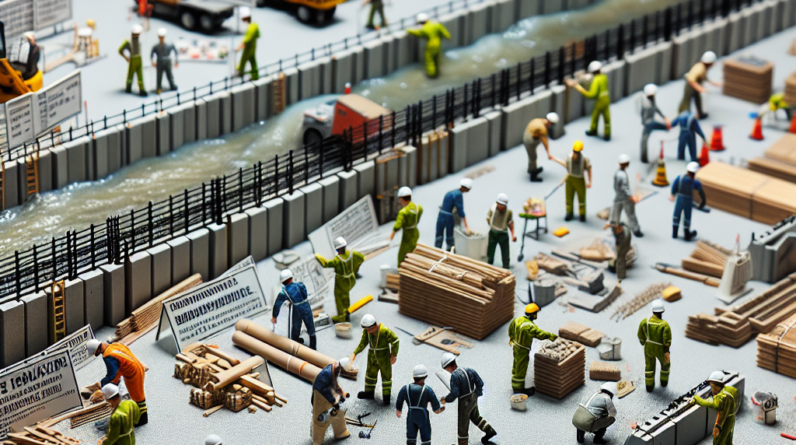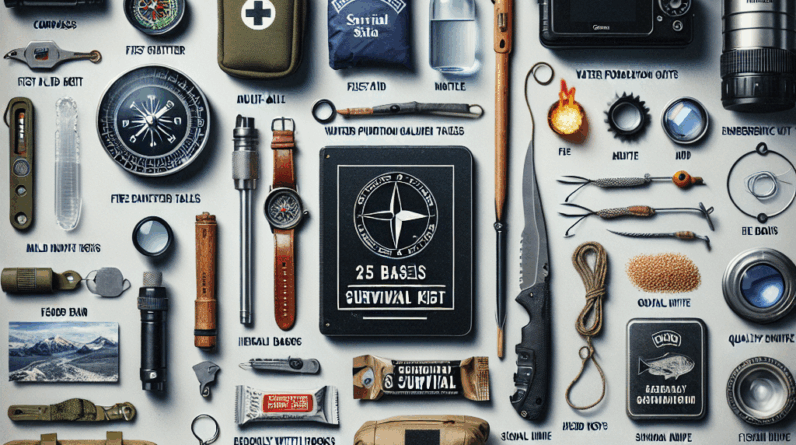
Creating an effective flood barrier is crucial for protecting your property from water damage. This comprehensive guide will walk you through the steps necessary to design, choose materials, and maintain a flood barrier that stands the test of time and nature.
Understanding Your Environment
# Assessing Your Property’s Vulnerability
Understanding the environment where your property is located is crucial when preparing for potential flooding. It’s important to thoroughly assess how vulnerable your property is to water damage. Key factors to consider include proximity to water bodies and the topography of your landscape. Even minor elevation differences can significantly influence flood risk.
It is also wise to consider historical flood data for your area. If flooding has occurred before, it’s likely to happen again. Gathering information on local flood patterns and discussing previous flood experiences with neighbors can provide valuable insights. Additionally, evaluate any existing flood barriers around your home to determine their effectiveness. Simple enhancements or repairs can substantially improve their efficiency.
Choosing the Right Materials
# Exploring Various Material Options
The materials you select for your flood barrier are fundamental to its effectiveness. Options range from traditional sandbags to more durable solutions like concrete. While sandbags are relatively straightforward to deploy, they require significant labor but are quite effective when used correctly.
Concrete offers excellent durability but may require specialized equipment and considerations due to its weight and permanence. Alternatively, natural materials such as earth or clay can be effective and aesthetically pleasing as they naturally integrate into the landscape. It’s important to review all available materials and consider their practicality for your specific situation.
Planning Your Barrier Design
# Creating a Blueprint
Designing your flood barrier can be an engaging process. Start by drafting a blueprint that considers potential flood levels. This should include dimensions such as height, length, and width that are appropriate for your location.
Incorporating natural drainage paths into your barrier design can help manage water flow more effectively. It’s crucial to design with nature, not against it, to enhance the functionality of your flood defenses. Additionally, plan for potential erosion that could undermine the barrier, ensuring it remains effective over time.
Installing the Barrier Properly
# Step-by-Step Instructions
Proper installation is critical to the success of your flood barrier. Begin by preparing the site, removing any debris or vegetation that could impede the barrier’s integrity. This preparation is essential for ensuring that the barrier functions as intended.
Next, install the foundational materials—whether sandbags, earth, or concrete—paying close attention to detail. Proper setup is crucial for optimal performance during a flood. After installation, inspect the barrier for any potential weaknesses or gaps and address these issues immediately to ensure maximum effectiveness.
Regular Maintenance and Upkeep
# Inspection and Repairs
Once your barrier is established, regular maintenance is key to its longevity. Set a routine to inspect the barrier periodically for signs of wear or damage, and make repairs as needed. Proactive maintenance can prevent minor issues from becoming major problems.
Adaptability is also important. As weather patterns and environmental conditions change, your flood barrier may need adjustments. Stay vigilant and ready to make necessary modifications to maintain its protective qualities.
FAQ
# 1. Why is it important to assess my property’s vulnerability before building a flood barrier?
Assessing your property’s specific risks helps in designing a flood barrier that is both effective and tailored to your needs. Preparation is crucial in flood management.
# 2. What materials are most effective for building a flood barrier?
Commonly used materials include sandbags, concrete, and natural elements like earth or clay. The choice depends on your specific conditions and the nature of the flooding threat.
# 3. How do I ensure the proper design of my flood barrier?
A carefully considered blueprint that accounts for local flood levels, natural water paths, and potential erosion is essential. Consulting with experts can provide additional insights.
# 4. How often should I perform maintenance on my flood barrier?
It is advisable to inspect your flood barrier at least twice a year to address any issues early on and maintain its effectiveness.
# 5. Can a flood barrier be modified after it’s built?
Yes, it’s important to adapt your barrier as needed based on environmental changes and new insights from ongoing inspections.




